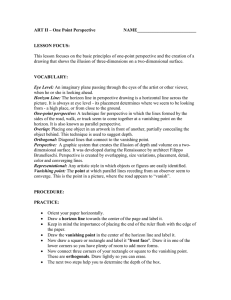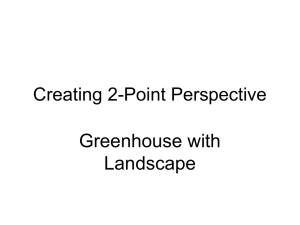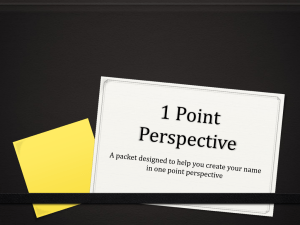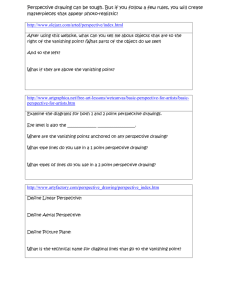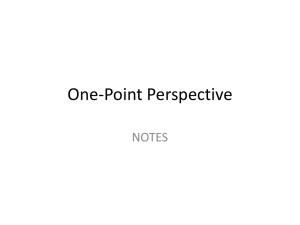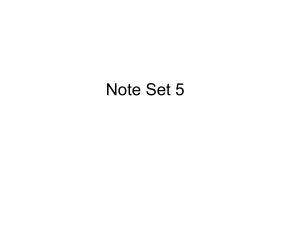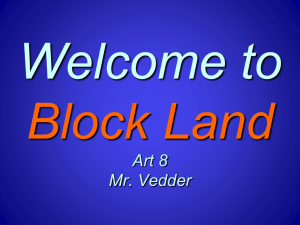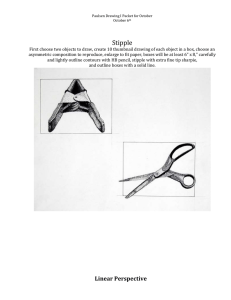ART II – Two Point Perspective NAME__________________________ LESSON FOCUS:
advertisement
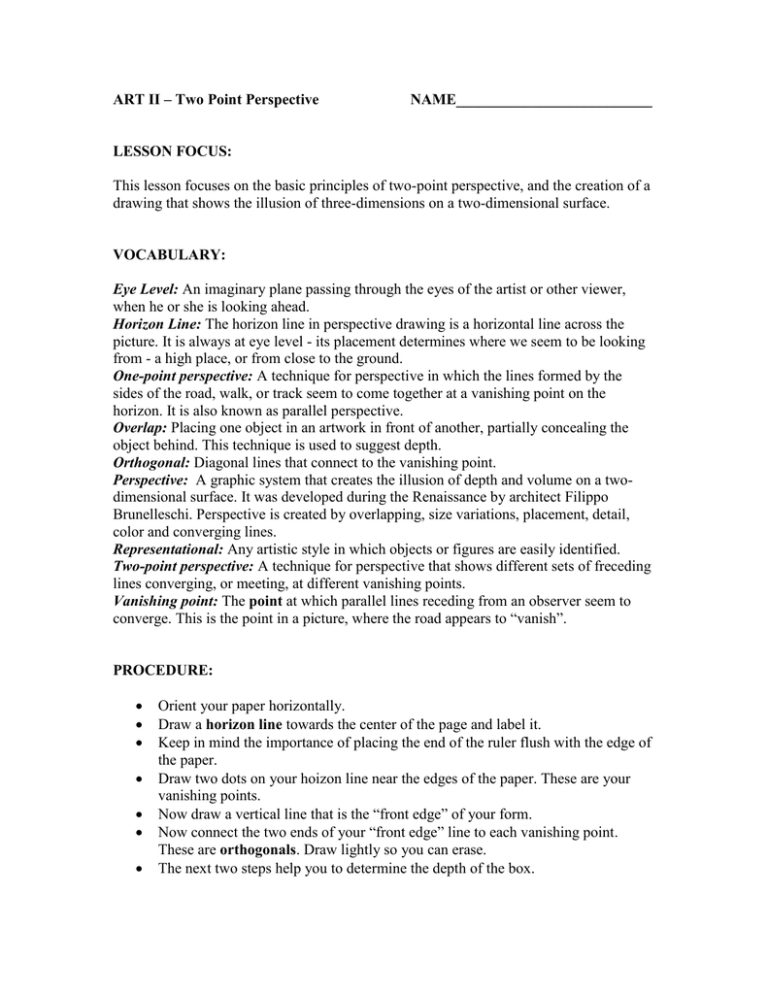
ART II – Two Point Perspective NAME__________________________ LESSON FOCUS: This lesson focuses on the basic principles of two-point perspective, and the creation of a drawing that shows the illusion of three-dimensions on a two-dimensional surface. VOCABULARY: Eye Level: An imaginary plane passing through the eyes of the artist or other viewer, when he or she is looking ahead. Horizon Line: The horizon line in perspective drawing is a horizontal line across the picture. It is always at eye level - its placement determines where we seem to be looking from - a high place, or from close to the ground. One-point perspective: A technique for perspective in which the lines formed by the sides of the road, walk, or track seem to come together at a vanishing point on the horizon. It is also known as parallel perspective. Overlap: Placing one object in an artwork in front of another, partially concealing the object behind. This technique is used to suggest depth. Orthogonal: Diagonal lines that connect to the vanishing point. Perspective: A graphic system that creates the illusion of depth and volume on a twodimensional surface. It was developed during the Renaissance by architect Filippo Brunelleschi. Perspective is created by overlapping, size variations, placement, detail, color and converging lines. Representational: Any artistic style in which objects or figures are easily identified. Two-point perspective: A technique for perspective that shows different sets of freceding lines converging, or meeting, at different vanishing points. Vanishing point: The point at which parallel lines receding from an observer seem to converge. This is the point in a picture, where the road appears to “vanish”. PROCEDURE: Orient your paper horizontally. Draw a horizon line towards the center of the page and label it. Keep in mind the importance of placing the end of the ruler flush with the edge of the paper. Draw two dots on your hoizon line near the edges of the paper. These are your vanishing points. Now draw a vertical line that is the “front edge” of your form. Now connect the two ends of your “front edge” line to each vanishing point. These are orthogonals. Draw lightly so you can erase. The next two steps help you to determine the depth of the box. Draw two vertical lines between the orthogonals where you want the back edges of your form. Now join the back, top corners to the opposite vanishing point to complete the top of the form. Erase the remaining orthogonals. PROJECT DIRECTIONS: Using the tools of two-point perspective, create a representational image that shows the illusion of depth (three-dimensions) on a two-dimensional surface. Suggested subject matter: rooms, furniture, buildings, etc. Once you have a good idea and a well balanced composition, trace onto 14”x 17” Bristol board. Finish using colored pencils. Things to keep in mind: o Objects that are further away are usually higher on the page (closer to the horizon), smaller in size, are less detailed and the color less intense. o Objects that are closer are usually at the bottom of the page, larger in size, and more detailed and brighter and/or darker in color. Add other elements (sky, trees, background, etc.) MATERIALS: 14”X 17” manila sketch paper pencils erasers ruler 14”x 17” white paper colored pencils
